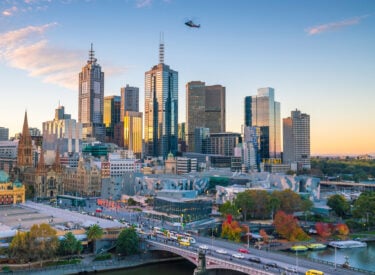
Key takeaways
While the 1% rule is a popular metric in the US (where rent should equal 1% of the purchase price), it simply doesn’t align with Australian market realities.
Local yields are far lower, typically 3–5%, making the rule impractical and misleading for Australian investors.
Unlike US investors who focus on cash flow, successful Australian investors target long-term capital growth. Properties in high-demand, affluent areas may have lower yields but deliver superior compounding returns over time.
Focus on the fundamentals, land value, scarcity, and the potential for the property to double in 10–15 years.
Avoid chasing short-term cash flow metrics imported from other markets. The smartest properties are those that will still look great two decades from now.
Ever heard of the 1% rule in property investment?
It sounds simple, even seductive. Buy a property where the monthly rent is at least 1% of the purchase price, and you’re set for positive cash flow.
In theory, it’s a quick way to separate good investments from bad.
While you may come across this a bit on the internet, and in particular with regard to residential real estate investment in the United States, In practice – at least in Australia – it’s complete rubbish.
You see…the “1% rule” is a quick-and-dirty guideline that some property investors in the USA use to screen potential rental properties. Here’s how it works:
- The monthly rent on a property should be at least 1% of the purchase price.
- Example: If you buy a property for $700,000, the 1% rule says it should generate at least $7,000 per month in rent.
The idea is that if the rent meets or exceeds 1% of the price, it’s more likely to cover costs like mortgage repayments, taxes, insurance, and maintenance - and possibly produce positive cash flow.

Why it doesn’t really work in Australia
This rule is rarely useful in the Australian property market for a few reasons:
- Our yields are much lower: In most capital cities, gross rental yields on houses sit closer to 2.5%–4% a year, and apartments may be 3.5%–5%. That’s nowhere near 12% (the implied annual yield of the 1% rule).
- We focus more on capital growth: Australian investors tend to rely on long-term price appreciation rather than chasing high rental yields. The best-performing suburbs often have lower yields but stronger growth prospects.
- Different tax and lending environment: Negative gearing, capital gains tax discounts, and how banks assess serviceability all make the Australian approach different.
But that doesn’t mean rules of thumb are useless.
In fact, savvy Australian investors have their own quick checks – ones that actually fit our market.
Let me walk you through a few of them.
1. The rental yield sanity check
The first test is dead simple:
- Work out the annual rent.
- Divide it by the purchase price.
That’s your gross yield.
As a guide:
- Houses in capital cities typically return 3–4%.
- Apartments in capital cities sit closer to 4–5%.
- Regional properties may stretch to 5–6%, sometimes higher, but that often comes at the expense of long-term capital growth.

Note: Remember: A higher yield doesn’t automatically mean a better investment. Often, the areas with the best long-term capital growth have the lowest yields.
2. The 40% expense buffer
Many beginning investors kid themselves by assuming rent will almost entirely cover the mortgage. It won’t.
A smart rule of thumb is to expect around 40% of the gross rent to disappear into running costs like maintenance, property management, insurance, rates, and vacancies – before you even think about mortgage repayments.
Example:
- Rent = $600/week ($31,200 a year)
- Expenses = ~$12,500 a year
This stops you from fooling yourself into thinking a “neutral” property is positively geared when it isn’t.
3. The mortgage stress test
Interest rates move. That’s the one thing we can always count on.
So before you buy, ask: “What happens if my interest rate jumps 2%?”
In fact, APRA forces the banks to apply a buffer of 3% when assessing your mortgage serviceability.
I think that's an overkill in today's falling interest rate environment. But if your deal still stacks up when repayments are at 8% rather than 5%, you’ll sleep much better at night.
4. The growth driver test
You've probably heard me say it before: cash flow keeps you in the game, but it's capital growth that will get you out of the rat race.
So instead of just running numbers, look at the suburb itself and ask: “What will push values up over the next 10–15 years?”
Look for:
- Demographics & Gentrification - As a property investor, your future income will be dependent upon your tenants' ability to keep paying higher rent over time. So avoid areas where tenants are a week or two away from broke.
- Limited supply of new dwellings
- Economic growth including employment hubs that create ongoing demand
- Infrastructure projects (transport, schools, hospitals, lifestyle precincts)
If you can’t name at least two or three strong growth drivers, walk away.
5. The land-to-asset ratio
Buildings wear out. Land doesn’t.
That’s why I like to see at least 40–50% of the property’s value sitting in the land, not just the building.
It’s one reason high-rise apartments rarely make good long-term investments. You’re mostly buying “air space” and a depreciating building rather than scarce, appreciating land.
6. The 15-year wealth test
Finally, ask yourself the big question: “Will this property meaningfully add to my wealth in the next 10–15 years?” “What are the growth drivers that will increase the value of this property?
That’s the timeframe where compounding works its magic.
If the property isn’t likely to double in value over the next decade, or at least take you a significant step closer to financial freedom, it may not be the right one.
The bottom line
The 1% rule may work in the US, but in Australia it’s about as useful as an umbrella in a cyclone.
Here, the smart investor balances cash flow with capital growth.
So don’t fall for imported rules of thumb that don’t apply here.
Use the ones that are tried and tested in our markets – and buy the kind of properties that will still look smart when you glance back 20 years from now.














